The Radiant World of Cyanobacterial Phycobiliproteins: Examining Their Structure, Functions, and Biomedical Potentials
Abstract
1. Introduction
2. Spectroscopic and Structural Characteristics of Cyanobacterial Phycobiliproteins
2.1. Subunits and Heterodimers (αβ)
2.2. PBPs Chromophore
2.3. Linker Polypeptides
3. Biomedical Potential of PBPs
3.1. Antioxidant Properties
3.2. Anticancer Properties
3.3. Anti-Inflammatory Effects
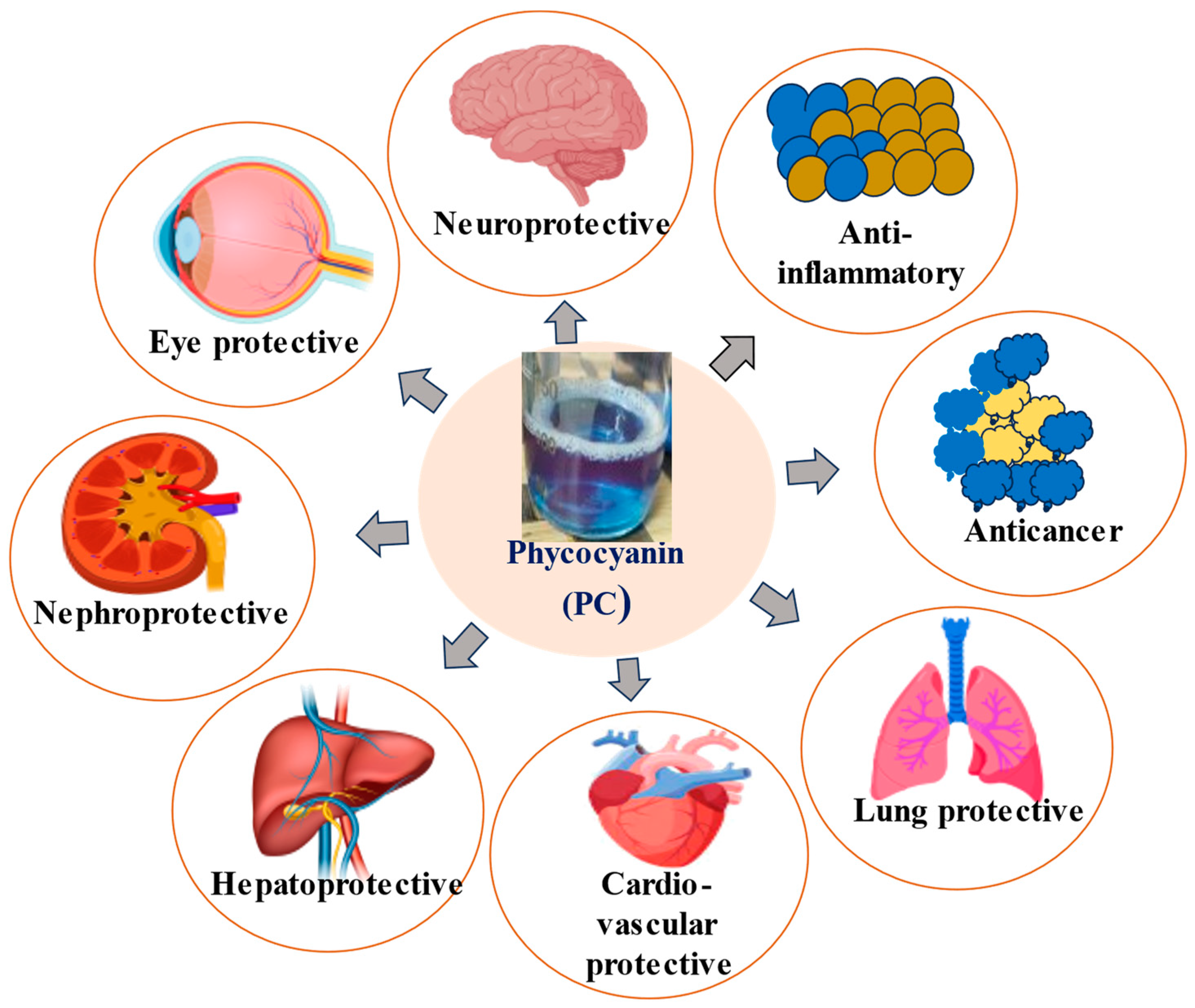
3.4. Potential as Diagnostic Tools
| Diagnostic Parameters | Disease | Patents Number | Patents Source/Country | Reference Link |
|---|---|---|---|---|
| Cardiac ailments | Cardiac arrhythmia | IN 4322/DELNP/2009 | InPASS database, India | http://ipindia.gov.in/ (15 November 2023) |
| Diastolic heart failure | IN 421/DELNP/2009 | InPASS database, India | http://ipindia.gov.in/ (15 November 2023) | |
| Acute coronary syndrome | IN 1278/KOLNP/2009 | InPASS database, India | http://ipindia.gov.in/ (15 November 2023) | |
| Brain and other central nervous system-related ailments/assessments | Alzheimer’s disease (β-peptide formation and cognitive impairment) | US 6770448; IN 148/KOLNP/2010; IN 6811/CHENP/2013 | USPTO database, United States of America; InPASS database, India | http://patft.uspto.gov/ (15 November 2023); http://ipindia.gov.in/ (15 November 2023) |
| Amyloid associated diseases (Due to Type II Diabetes mellitus, prions, etc.) | IN 380/CHENP/2006 | InPASS database, India | http://ipindia.gov.in/ (15 November 2023) | |
| Multiple neurodegenerative disorders | IN 201717043447; IN 201717043449 | InPASS database, India | http://ipindia.gov.in/ (15 November 2023) | |
| Multi-organ ailments | Pulmonary hypertension and cardiac dysfunction | IN 201617043331 | InPASS database, India | http://ipindia.gov.in/ (15 November 2023) |
| Cardiac and kidney diseases using signal peptides | IN 201818036486 | InPASS database, India | http://ipindia.gov.in/ (15 November 2023) | |
| Kidney disease | CN 109154621 | CNIPA database, China | http://english.sipo.gov.cn/ (15 November 2023) | |
| Liver fibrosis (necrosis of hepatocytes) | IN 2894/DELNP/2004 | InPASS database, India | http://ipindia.gov.in/ (15 November 2023) | |
| Infectious Diseases | Microbial infections | US 6649356; JP3336406 (E) | USPTO database, United States of America; J-Plat Pat database, Japan | http://patft.uspto.gov/ (15 November 2023); https://www.jpo.go.jp/ (15 November 2023) |
| Tick borne pathogens | CN 103173567 | CNIPA database, China | http://english.sipo.gov.cn/ (15 November 2023) | |
| Mycobacterial infection | JP 2003-534810 | J-Plat Pat database, Japan | https://www.jpo.go.jp/ (15 November 2023) | |
| Human Immunodeficiency Virus (HIV) infection | US 5108904; US 5156951; US 5597688 | USPTO database, United States of America | http://patft.uspto.gov/ (15 November 2023) | |
| Japanese encephalitis virus | US 9783596 | USPTO database, United States of America | http://patft.uspto.gov/ (15 November 2023) | |
| Hepatitis B Virus (HBV) genotyping | US 9927439; US 10067135; KR 1020040002964; CN101144815 (E) | USPTO database, United States of America; KIPRIS database, Korea; CNIPA database, China | http://patft.uspto.gov/ (15 November 2023); http://english.sipo.gov.cn/ (15 November 2023) | |
| Hepatitis C Virus (HCV) genotyping | KR 20040083940 (E); IN 9851/DELNP/2008 | KIPRIS database, Korea; InPASS database, India | http://eng.kipris.or.kr/ (15 November 2023); http://ipindia.gov.in/ (15 November 2023) | |
| Organ-specific cancers | Pancreatic cancer | US 7052859; US 7282567; US 8795662; IN 4773/CHENP/2012 | USPTO database, United States of America; InPASS database, India | http://patft.uspto.gov/ (15 November 2023); http://ipindia.gov.in/ (15 November 2023) |
| Pancreatic adenocarcinoma | US 9238081; IN 4612/DELNP/2012 | USPTO database, United States of America; InPASS database, India | http://patft.uspto.gov/ (15 November 2023); http://ipindia.gov.in/ (15 November 2023) | |
| Lung cancer | CN103383395 (E); CN103439511 (E) | CNIPA database, China | http://english.sipo.gov.cn/ (15 November 2023) | |
| Breast carcinoma | US 8329875; CN 1012013570; IN 201641017874 | USPTO database, United States of America; CNIPA database, China; InPASS database, India | http://patft.uspto.gov/ (15 November 2023); http://english.sipo.gov.cn/ (15 November 2023); http://ipindia.gov.in/ (15 November 2023) | |
| Cervical cancer | US 7067268; US 7901883; US 8389217; IN 2414/CHENP/2007; IN 3382/DELNP/2015 | USPTO database, United States of America; InPASS database, India | http://patft.uspto.gov/ (15 November 2023); http://ipindia.gov.in/ (15 November 2023) | |
| General immune disorders | Autoimmune diseases | US 6596501; US 7674632; US 7771932; CN1866013 (E); IN 4492/DELNP/2015; IN 5860/DELNP/2009 | USPTO database, United States of America; CNIPA database, China; InPASS database, India | http://patft.uspto.gov/ (15 November 2023); http://english.sipo.gov.cn/ (15 November 2023); http://ipindia.gov.in/ (15 November 2023) |
| Rheumatoid arthritis (autoimmune attack of joints) | JP 2005-527813; KR 1020080036215; IN 2179/MUMNP/2013 | J-Plat Pat database, Japan; KIPRIS database, Korea; InPASS database, India | https://www.jpo.go.jp/ (15 November 2023); http://eng.kipris.or.kr/ (15 November 2023); http://ipindia.gov.in/ (15 November 2023) | |
| Antinuclear antibody | CN 108802375 (E) | CNIPA database, China | http://english.sipo.gov.cn/ (15 November 2023) | |
| Antihistone antibodies | US 8987421; US 10040848 | USPTO database, United States of America | http://patft.uspto.gov/ (15 November 2023) | |
| Autoantibodies to drugs | IN 7324/DELNP/2013 | InPASS database, India | http://ipindia.gov.in/ (15 November 2023) |
3.5. Application in Photodynamic Therapy (PDT)
4. Phycobiliproteins as Bioluminescent Markers
5. Challenges and Future Perspectives in Biomedical Applications
6. Conclusions
Author Contributions
Funding
Institutional Review Board Statement
Informed Consent Statement
Data Availability Statement
Acknowledgments
Conflicts of Interest
References
- Masojídek, J.; Torzillo, G.; Koblížek, M. Photosynthesis in microalgae. In Handbook of Microalgal Culture: Applied Phycology and Biotechnology; Wiley: Hoboken, NJ, USA, 2013; pp. 21–36. [Google Scholar] [CrossRef]
- Pagels, F.; Guedes, A.C.; Amaro, H.M.; Kijjoa, A.; Vasconcelos, V. Phycobiliproteins from cyanobacteria: Chemistry and biotechnological applications. Biotechnol. Adv. 2019, 37, 422–443. [Google Scholar] [CrossRef] [PubMed]
- Kannaujiya, V.K.; Sundaram, S.; Sinha, R.P. Structural and functional significance of phycobiliproteins. In Phycobiliproteins: Recent Developments and Future Applications; Springer: Berlin/Heidelberg, Germany, 2017; pp. 21–44. [Google Scholar]
- Bryant, D.A.; Guglielmi, G.; de Marsac, N.T.; Castets, A.M.; Cohen-Bazire, G. The structure of cyanobacterial phycobilisomes: A model. Arch. Microbiol. 1979, 123, 113–127. [Google Scholar] [CrossRef]
- Arteni, A.A.; Ajlani, G.; Boekema, E.J. Structural organisation of phycobilisomes from Synechocystis sp. strain PCC 6803 and their interaction with the membrane. Biochim. Biophys. Acta Bioenerg. 2009, 1787, 272–279. [Google Scholar] [CrossRef] [PubMed]
- Figueroa, M.; Martínez-Oyanedel, J.; Matamala, A.R.; Dagnino-Leone, J.; Mella, C.; Fritz, R.; Bunster, M. In silico model of an antenna of a phycobilisome and energy transfer rates determination by theoretical Förster approach. Protein Sci. 2012, 21, 1921–1928. [Google Scholar] [CrossRef]
- Su, H.N.; Xie, B.B.; Chen, X.L.; Wang, J.X.; Zhang, X.Y.; Zhou, B.C.; Zhang, Y.Z. Efficient separation and purification of allophycocyanin from Spirulina (Arthrospira) platensis. J. Appl. Phycol. 2010, 22, 65–70. [Google Scholar] [CrossRef]
- Dagnino-Leone, J.; Figueroa, M.; Uribe, E.; Hinrichs, M.V.; Ortiz-López, D.; Martínez-Oyanedel, J.; Bunster, M. Biosynthesis and characterization of a recombinant eukaryotic allophycocyanin using prokaryotic accessory enzymes. Microbiology 2020, 9, e989. [Google Scholar] [CrossRef]
- Singh, V.K.; Jha, S.; Rana, P.; Mishra, S.; Kumari, N.; Singh, S.C.; Sinha, R.P. Resilience and mitigation strategies of cyanobacteria under ultraviolet radiation stress. Int. J. Mol. Sci. 2023, 24, 12381. [Google Scholar] [CrossRef] [PubMed]
- Manirafasha, E.; Guo, L.; Jing, K. Nutraceutical and pharmaceutical applications of phycobiliproteins. In Pigments from Microalgae Handbook; Springer: Berlin/Heidelberg, Germany, 2020; pp. 575–584. [Google Scholar]
- Gupta, A.; Singh, A.P.; Singh, V.K.; Singh, P.R.; Jaiswal, J.; Kumari, N.; Sinha, R.P. Natural sun-screening compounds and DNA-repair enzymes: Photoprotection and photoaging. Catalysts 2023, 13, 745. [Google Scholar] [CrossRef]
- Scheer, H.; Zhao, K.H. Biliprotein maturation: The chromophore attachment. Mol. Microbiol. 2008, 68, 263–276. [Google Scholar] [CrossRef]
- Ma, J.; You, X.; Sun, S.; Wang, X.; Qin, S.; Sui, S.F. Structural basis of energy transfer in Porphyridium purpureum phycobilisome. Nature 2020, 579, 146–151. [Google Scholar] [CrossRef]
- Hirose, Y.; Chihong, S.; Watanabe, M.; Yonekawa, C.; Murata, K.; Ikeuchi, M.; Eki, T. Diverse chromatic acclimation processes regulating phycoerythrocyanin and rod-shaped phycobilisome in cyanobacteria. Mol. Plant 2019, 12, 715–725. [Google Scholar] [CrossRef] [PubMed]
- Alvey, R.M.; Biswas, A.; Schluchter, W.M.; Bryant, D.A. Attachment of noncognate chromophores to CpcA of Synechocystis sp. PCC 6803 and Synechococcus sp. PCC 7002 by heterologous expression in Escherichia coli. Biochemistry 2011, 50, 4890–4902. [Google Scholar] [CrossRef] [PubMed]
- McGregor, A.; Klartag, M.; David, L.; Adir, N. Allophycocyanin trimer stability and functionality are primarily due to polar enhanced hydrophobicity of the phycocyanobilin binding pocket. J. Mol. Biol. 2008, 384, 406–421. [Google Scholar] [CrossRef] [PubMed]
- Li, W.; Su, H.N.; Pu, Y.; Chen, J.; Liu, L.N.; Liu, Q.; Qin, S. Phycobiliproteins: Molecular structure, production, applications, and prospects. Biotechnol. Adv. 2019, 37, 340–353. [Google Scholar] [CrossRef] [PubMed]
- Marx, A.; Adir, N. Allophycocyanin and phycocyanin crystal structures reveal facets of phycobilisome assembly. Biochim. Biophys. Acta Bioenerg. 2013, 1827, 311–318. [Google Scholar] [CrossRef] [PubMed]
- Zhang, J.; Ma, J.; Liu, D.; Qin, S.; Sun, S.; Zhao, J.; Sui, S.F. Structure of phycobilisome from the red alga Griffithsia pacifica. Nature 2017, 551, 57–63. [Google Scholar] [CrossRef]
- Singh, N.K.; Sonani, R.R.; Rastogi, R.P.; Madamwar, D. The phycobilisomes: An early requisite for efficient photosynthesis in cyanobacteria. EXCLI J. 2015, 14, 268. [Google Scholar] [CrossRef]
- Sui, S.F. Structure of phycobilisomes. Annu. Rev. Biophys. 2021, 50, 53–72. [Google Scholar] [CrossRef]
- Dagnino-Leone, J.; Figueroa, C.P.; Castañeda, M.L.; Youlton, A.D.; Vallejos-Almirall, A.; Agurto-Muñoz, A.; Agurto-Muñoz, C. Phycobiliproteins: Structural aspects, functional characteristics, and biotechnological perspectives. Comput. Struct. Biotechnol. J. 2022, 20, 1506–1527. [Google Scholar] [CrossRef]
- Stadnichuk, I.N.; Krasilnikov, P.M.; Zlenko, D.V. Cyanobacterial phycobilisomes and phycobiliproteins. Microbiology 2015, 84, 101–111. [Google Scholar] [CrossRef]
- Chen, H.; Qi, H.; Xiong, P. Phycobiliproteins-A family of algae-derived biliproteins: Productions, characterization and pharmaceutical potentials. Mar. Drugs 2022, 20, 450. [Google Scholar] [CrossRef] [PubMed]
- Zehetmayer, P.; Hellerer, T.; Parbel, A.; Scheer, H.; Zumbusch, A. Spectroscopy of single phycoerythrocyanin monomers: Dark state identification and observation of energy transfer heterogeneities. Biophys. J. 2002, 83, 407–415. [Google Scholar] [CrossRef] [PubMed]
- Kikuchi, H. Redshifting and blueshifting of β82 chromophores in the phycocyanin hexamer of Porphyridium purpureum phycobilisomes due to linker proteins. Life 2022, 12, 1833. [Google Scholar] [CrossRef] [PubMed]
- MacColl, R.; Eisele, L.E.; Malak, H.; Endres, R.L.; Williams, E.C.; Bowser, S.S. Studies on R-phycoerythrins from two Antarctic marine red algae and a mesophilic red alga. Polar Biol. 1999, 22, 384–388. [Google Scholar] [CrossRef]
- Stadnichuk, I.N.; Tropin, I.V. Phycobiliproteins: Structure, functions and biotechnological applications. Appl. Biochem. Microbiol. 2017, 53, 1–10. [Google Scholar] [CrossRef]
- Liu, L.N.; Chen, X.L.; Zhang, Y.Z.; Zhou, B.C. Characterization, structure and function of linker polypeptides in phycobilisomes of cyanobacteria and red algae: An overview. Biochim. Biophys. Acta Bioenerg. 2005, 1708, 133–142. [Google Scholar] [CrossRef] [PubMed]
- Stadnichuk, I.N.; Kusnetsov, V.V. Phycobilisomes and phycobiliproteins in the pigment apparatus of oxygenic photosynthetics: From cyanobacteria to tertiary endosymbiosis. Int. J. Mol. Sci. 2023, 24, 2290. [Google Scholar] [CrossRef]
- Nganou, C.; David, L.; Adir, N.; Mkandawire, M. Linker proteins enable ultrafast excitation energy transfer in the phycobilisome antenna system of Thermosynechococcus vulcanus. Photochem. Photobiol. Sci. 2016, 15, 31–44. [Google Scholar] [CrossRef]
- Richa, K.V.; Kesheri, M.; Singh, G.; Sinha, R.P. Biotechnological potentials of phycobiliproteins. Int. J. Pharma Bio Sci. 2011, 2, 446–454. [Google Scholar]
- Arulselvan, P.; Fard, M.T.; Tan, W.S.; Gothai, S.; Fakurazi, S.; Norhaizan, M.E.; Kumar, S.S. Role of antioxidants and natural products in inflammation. Oxid. Med. Cell. Longev. 2016, 2016, 5276130. [Google Scholar] [CrossRef]
- Hirata, T.; Tanaka, M.; Ooike, M.; Tsunomura, T.; Sakaguchi, M. Antioxidant activities of phycocyanobilin prepared from Spirulina platensis. J. Appl. Phycol. 2000, 12, 435–439. [Google Scholar] [CrossRef]
- Singh, P.R.; Gupta, A.; Pathak, J.; Sinha, R.P. Phylogenetic distribution, structural analysis and interaction of nucleotide excision repair proteins in cyanobacteria. DNA Repair 2023, 126, 103487. [Google Scholar] [CrossRef] [PubMed]
- Strasky, Z.; Zemankova, L.; Nemeckova, I.; Rathouska, J.; Wong, R.J.; Muchova, L.; Nachtigal, P. Spirulina platensis and phycocyanobilin activate atheroprotective heme oxygenase-1: A possible implication for atherogenesis. Food Funct. 2013, 4, 1586–1594. [Google Scholar] [CrossRef] [PubMed]
- Benedetti, S.; Benvenuti, F.; Scoglio, S.; Canestrari, F. Oxygen radical absorbance capacity of phycocyanin and phycocyanobilin from the food supplement Aphanizomenon flos-aquae. J. Med. Food 2010, 13, 223–227. [Google Scholar] [CrossRef] [PubMed]
- Patel, S.N.; Sonani, R.R.; Jakharia, K.; Bhastana, B.; Patel, H.M.; Chaubey, M.G.; Madamwar, D. Antioxidant activity and associated structural attributes of Halomicronema phycoerythrin. Int. J. Biol. Macromol. 2018, 111, 359–369. [Google Scholar] [CrossRef] [PubMed]
- Datla, P. The wonder molecule called phycocyanin. In Parry Nutraceuticals; Division of EID Parry (India) Ltd.: Chennai, India, 2011. [Google Scholar]
- Cervantes-Llanos, M.; Lagumersindez-Denis, N.; Marín-Prida, J.; Pavón-Fuentes, N.; Falcon-Cama, V.; Piniella-Matamoros, B.; Pentón-Rol, G. Beneficial effects of oral administration of C-phycocyanin and phycocyanobilin in rodent models of experimental autoimmune encephalomyelitis. Life Sci. 2018, 194, 130–138. [Google Scholar] [CrossRef]
- Gdara, N.B.; Belgacem, A.; Khemiri, I.; Mannai, S.; Bitri, L. Protective effects of phycocyanin on ischemia/reperfusion liver injuries. Biomed. Pharmacother. 2018, 102, 196–202. [Google Scholar] [CrossRef] [PubMed]
- Liu, Q.; Huang, Y.; Zhang, R.; Cai, T.; Cai, Y. Medical application of Spirulina platensis derived C-phycocyanin. Evid. Based Complement. Altern. Med. 2016, 2016, 7803846. [Google Scholar] [CrossRef]
- Simmons, T.L.; Andrianasolo, E.; McPhail, K.; Flatt, P.; Gerwick, W.H. Marine natural products as anticancer drugs. Mol. Cancer Ther. 2005, 4, 333–342. [Google Scholar] [CrossRef]
- Ravi, M.; Tentu, S.; Baskar, G.; Rohan Prasad, S.; Raghavan, S.; Jayaprakash, P.; Venkatraman, G. Molecular mechanism of anti-cancer activity of phycocyanin in triple-negative breast cancer cells. BMC Cancer 2015, 15, 768. [Google Scholar] [CrossRef]
- McCarty, M.F.; Iloki-Assanga, S.; Lujany, L.M.L. Nutraceutical targeting of TLR4 signaling has potential for prevention of cancer cachexia. Med. Hypotheses 2019, 132, 109326. [Google Scholar] [CrossRef] [PubMed]
- Hao, S.; Li, S.; Wang, J.; Yan, Y.; Ai, X.; Zhang, J.; Wang, C. Phycocyanin exerts anti-proliferative effects through down-regulating TIRAP/NF-κB activity in human non-small cell lung cancer cells. Cells 2019, 8, 588. [Google Scholar] [CrossRef] [PubMed]
- Ying, J.; Tang, Z.; Zhao, G.; Li, X.; Pan, R.; Lin, S.; Yan, C. Transcriptionomic Study on Apoptosis of SKOV-3 Cells Induced by Phycoerythrin from Gracilaria lemaneiformis. Anti-Cancer Agents Med. Chem. 2021, 21, 1240–1249. [Google Scholar] [CrossRef] [PubMed]
- Nathan, C. Points of Control in Inflammation. Nature 2002, 420, 846–852. [Google Scholar] [CrossRef]
- Piniella-Matamoros, B.; Marin-Prida, J.; Penton-Rol, G. Nutraceutical and therapeutic potential of phycocyanobilin for treating Alzheimer’s disease. J. Biosci. 2021, 46, 42. [Google Scholar] [CrossRef]
- Leung, P.O.; Lee, H.H.; Kung, Y.C.; Tsai, M.F.; Chou, T.C. Therapeutic effect of C-phycocyanin extracted from blue green algae in a rat model of acute lung injury induced by lipopolysaccharide. Evid.-Based Complement. Altern. Med. 2013, 2013, 916590. [Google Scholar] [CrossRef]
- Kefayat, A.; Ghahremani, F.; Safavi, A.; Hajiaghababa, A.; Moshtaghian, J. C-phycocyanin: A natural product with radiosensitizing property for enhancement of colon cancer radiation therapy efficacy through inhibition of COX-2 expression. Sci. Rep. 2019, 9, 19161. [Google Scholar] [CrossRef]
- Bannu, S.M.; Lomada, D.; Gulla, S.; Chandrasekhar, T.; Reddanna, P.; Reddy, M.C. Potential therapeutic applications of C-phycocyanin. Curr. Drug Metab. 2019, 20, 967–976. [Google Scholar] [CrossRef]
- Kim, K.M.; Lee, J.Y.; Im, A.R.; Chae, S. Phycocyanin protects against UVB-induced apoptosis through the PKC α/βII-Nrf-2/HO-1 dependent pathway in human primary skin cells. Molecules 2018, 23, 478. [Google Scholar] [CrossRef]
- Fernández-Rojas, B.; Hernández-Juárez, J.; Pedraza-Chaverri, J. Nutraceutical properties of phycocyanin. J. Funct. Foods 2014, 11, 375–392. [Google Scholar] [CrossRef]
- Prabakaran, G.; Sampathkumar, P.; Kavisri, M.; Moovendhan, M. Extraction and characterization of phycocyanin from Spirulina platensis and evaluation of its anticancer, antidiabetic and anti-inflammatory effect. Int. J. Biol. Macromol. 2020, 153, 256–263. [Google Scholar] [CrossRef] [PubMed]
- Wang, C.; Shen, Z.; Li, L.; Li, Y.; Zhao, H.; Jiang, X. Immunomodulatory activity of R-phycoerythrin from Porphyra haitanensis via TLR4/NF-κB-dependent immunocyte differentiation. Food Funct. 2020, 11, 2173–2185. [Google Scholar] [CrossRef] [PubMed]
- Gonzalez, R.; Rodriguez, S.; Romay, C.H.E.Y.L.A.; Gonzalez, A.; Armesto, J.; Remirez, D.; Merino, N. Anti-inflammatory activity of phycocyanin extract in acetic acid-induced colitis in rats. Pharmacol. Res. 1999, 39, 55–59. [Google Scholar] [CrossRef] [PubMed]
- Bergmeier, W.; Schulte, V.; Brockhoff, G.; Bier, U.; Zirngibl, H.; Nieswandt, B. Flow cytometric detection of activated mouse integrin αIIbβ3 with a novel monoclonal antibody. Cytometry 2002, 48, 80–86. [Google Scholar] [CrossRef] [PubMed]
- Pan, Y.; Wei, X.; Liang, T.; Zhou, J.; Wan, H.; Hu, N.; Wang, P. A magnetic beads-based portable flow cytometry immunosensor for in-situ detection of marine biotoxin. Biomed. Microdevices 2018, 20, 60. [Google Scholar] [CrossRef]
- Xu, Y.; Hou, Y.; Wang, Y.; Wang, Y.; Li, T.; Song, C.; Wei, N.; Wang, Q. Sensitive and selective detection of Cu2+ ions based on fluorescent Ag nanoparticles synthesized by R-phycoerythrin from marine algae Porphyra yezoensis. Ecotoxicol. Environ. Saf. 2019, 168, 356–362. [Google Scholar] [CrossRef] [PubMed]
- Patel, D.; Good, T. A rapid method to measure beta-amyloid induced neurotoxicity in vitro. J. Neurosci. Methods. 2007, 161, 1–10. [Google Scholar] [CrossRef]
- Wada, T.; Sakakibara, Y.; Nishimura, R.; Toma, T.; Ueno, Y.; Horita, S.; Tanaka, T.; Nishi, M.; Kato, K.; Yasumi, T.; et al. Down-regulation of CD5 expression on activated CD8+ T cells in familial hemophagocytic lymphohistiocytosis with perforin gene mutations. Human Immunol. 2013, 74, 1579–1585. [Google Scholar] [CrossRef]
- Lin, Z.; Jiang, B.P.; Liang, J.; Wen, C.; Shen, X.C. Phycocyanin functionalized single-walled carbon nanohorns hybrid for near-infrared light-mediated cancer phototheranostics. Carbon 2019, 143, 814–827. [Google Scholar] [CrossRef]
- Gupta, R.; Jain, P.; Deo, S.V.S.; Sharma, A. Flow cytometric analysis of CD5+ B cells: A frame of reference for minimal residual disease analysis in chronic lymphocytic leukemia. Am. J. Clin. Pathol. 2004, 121, 368–372. [Google Scholar] [CrossRef]
- Ge, B.; Lin, X.; Chen, Y.; Wang, X.; Chen, H.; Jiang, P.; Huang, F. Combinational biosynthesis of dual-functional streptavidin-phycobiliproteins for high-throughput-compatible immunoassay. Process Biochem. 2017, 58, 306–312. [Google Scholar] [CrossRef]
- Tawa, K.; Yamamura, S.; Sasakawa, C.; Shibata, I.; Kataoka, M. Sensitive detection of cell surface membrane proteins in living breast cancer cells using multicolor fluorescence microscopy with a plasmonic chip. ACS Appl. Mater. Interfaces 2016, 8, 29893–29898. [Google Scholar] [CrossRef] [PubMed]
- Wu, J.; Chen, H.; Jiang, P. Chromophore attachment to fusion protein of streptavidin and recombinant allophycocyanin α subunit. Bioengineered 2018, 9, 108–115. [Google Scholar] [CrossRef] [PubMed]
- Chen, H.; Jiang, P. Combinational biosynthesis and characterization of fusion proteins with tandem repeats of allophycocyanin holo-α subunits, and their application as bright fluorescent labels for immunofluorescence assay. J. Biosci. Bioeng. 2018, 126, 778–782. [Google Scholar] [CrossRef] [PubMed]
- Vinothkanna, A.; Sekar, S. Diagnostic applications of phycobiliproteins. In Pigments from Microalgae Handbook; Springer: Berlin/Heidelberg, Germany, 2020; pp. 585–610. [Google Scholar]
- Wainwright, M. Photodynamic therapy-from dyestuffs to high-tech clinical practice. Rev. Prog. Color Relat. Top. 2004, 34, 95–109. [Google Scholar] [CrossRef]
- Bharathiraja, S.; Seo, H.; Manivasagan, P.; Santha Moorthy, M.; Park, S.; Oh, J. In vitro photodynamic effect of phycocyanin against breast cancer cells. Molecules 2016, 21, 1470. [Google Scholar] [CrossRef] [PubMed]
- Ormond, A.B.; Freeman, H.S. Dye sensitizers for photodynamic therapy. Materials 2013, 6, 817–840. [Google Scholar] [CrossRef]
- Muthulakshmi, M.; Saranya, A.; Sudha, M.; Selvakumar, G. Extraction, partial purification, and antibacterial activity of phycocyanin from Spirulina isolated from fresh water body against various human pathogens. J. Algal Biomass Util. 2012, 3, 7–11. [Google Scholar]
- Chen, J.C.; Liu, K.S.; Yang, T.J.; Hwang, J.H.; Chan, Y.C.; Lee, I.T. Spirulina and C-phycocyanin reduce cytotoxicity and inflammation-related genes expression of microglial cells. Nutr. Neurosci. 2012, 15, 252–256. [Google Scholar] [CrossRef]
- Chen, H.W.; Yang, T.S.; Chen, M.J.; Chang, Y.C.; Eugene, I.; Wang, C.; Ho, C.L.; Lai, Y.J.; Yu, C.C.; Chou, J.C.; et al. Purification and immunomodulating activity of C-phycocyanin from Spirulina platensis cultured using power plant flue gas. Process Biochem. 2014, 49, 1337–1344. [Google Scholar] [CrossRef]
- Chen, E.P.; Markosyan, N.; Connolly, E.; Lawson, J.A.; Li, X.; Grant, G.R.; Grosser, T.; FitzGerald, G.A.; Smyth, E.M. Myeloid Cell COX-2 deletion reduces mammary tumor growth through enhanced cytotoxic T-lymphocyte function. Carcinogenesis 2014, 35, 1788–1797. [Google Scholar] [CrossRef] [PubMed]
- Avci, P.; Gupta, A.; Sadasivam, M.; Vecchio, D.; Pam, Z.; Pam, N.; Hamblin, M.R. Low-level laser (light) therapy (LLLT) in skin: Stimulating, healing, restoring. Semin Cutan. Med. Surg. 2013, 32, 41–52. [Google Scholar] [PubMed]
- Li, B.; Chu, X.; Gao, M.; Li, W. Apoptotic mechanism of MCF-7 breast cells in vivo and in vitro induced by photodynamic therapy with C-phycocyanin. Acta Biochim. Biophys. Sin. 2010, 42, 80–89. [Google Scholar] [CrossRef] [PubMed]
- Li, B.; Chu, X.M.; Gao, M.H. Treatment of HeLa tumor in mice with c-phycocyanin mediated photodynamic therapy and its immune mechanism underlying apoptosis. Chin. J. Laser Med. Surg. 2011, 20, 1–6. [Google Scholar]
- Rodriguez, E.A.; Tran, G.N.; Gross, L.A.; Crisp, J.L.; Shu, X.; Lin, J.Y.; Tsien, R.Y. A far-red fluorescent protein evolved from a cyanobacterial phycobiliprotein. Nat. Methods 2016, 13, 763–769. [Google Scholar] [CrossRef]
- Jespersen, L.; Strømdahl, L.D.; Olsen, K.; Skibsted, L.H. Heat and light stability of three natural blue colorants for use in confectionery and beverages. Eur. Food Res. Technol. 2005, 220, 261–266. [Google Scholar] [CrossRef]
- Adli, S.A.; Ali, F.; Azmi, A.S.; Anuar, H.; Nasir, N.A.M.; Hasham, R.; Idris, M.K.H. Development of biodegradable cosmetic patch using a polylactic acid/phycocyanin–alginate composite. Polymer 2020, 12, 1669. [Google Scholar] [CrossRef]
- Zhang, Y.; Liu, H.; Dai, X.; Li, H.; Zhou, X.; Chen, S.; Li, Z. Cyanobacteria-based near-infrared light-excited self-supplying oxygen system for enhanced photodynamic therapy of hypoxic tumors. Nano Res. 2021, 14, 667–673. [Google Scholar] [CrossRef]
- Sekar, S.; Chandramohan, M. Phycobiliproteins as a commodity: Trends in applied research, patents and commercialization. J. Appl. Phycol. 2008, 20, 113–136. [Google Scholar] [CrossRef]
- Xing, F.L.; Zhang, Z.H.; Yang, C.L.; Wang, M.S.; Ma, X.G. Phycoerythrobilin/phycourobilin as efficient sensitizers of dye-sensitized solar cell. Soil Energy 2022, 243, 494–499. [Google Scholar] [CrossRef]
- Grossman, A.R.; Schaefer, M.R.; Chiang, G.G.; Collier, J. The phycobilisome, a light-harvesting complex responsive to environmental conditions. Microbiol. Rev. 1993, 57, 725–749. [Google Scholar] [CrossRef] [PubMed]
- Loos, D.; Cotlet, M.; De Schryver, F.; Habuchi, S.; Hofkens, J. Single-molecule spectroscopy selectively probes donor and acceptor chromophores in the phycobiliprotein allophycocyanin. Biophys. J. 2004, 87, 2598–2608. [Google Scholar] [CrossRef] [PubMed]
- Peng, P.P.; Dong, L.L.; Sun, Y.F.; Zeng, X.L.; Ding, W.L.; Scheer, H.; Zhao, K.H. The structure of allophycocyanin B from Synechocystis PCC 6803 reveals the structural basis for the extreme redshift of the terminal emitter in phycobilisomes. Acta Crystallogr. D Biol. Crystallogr. 2014, 70, 2558–2569. [Google Scholar] [CrossRef] [PubMed]
- Xu, Q.Z.; Han, J.X.; Tang, Q.Y.; Ding, W.L.; Miao, D.; Zhou, M.; Zhao, K.H. Far-red light photoacclimation: Chromophorylation of FR induced α-and β-subunits of allophycocyanin from Chroococcidiopsis thermalis sp. PCC7203. Biochim. Biophys. Acta Bioenerg. 2016, 1857, 1607–1616. [Google Scholar] [CrossRef]
- Sonani, R.R.; Gupta, G.D.; Madamwar, D.; Kumar, V. Crystal structure of allophycocyanin from marine cyanobacterium Phormidium sp. A09DM. PLoS ONE 2015, 10, e0124580. [Google Scholar] [CrossRef]
- Biswas, A.; Vasquez, Y.M.; Dragomani, T.M.; Kronfel, M.L.; Williams, S.R.; Alvey, R.M.; Schluchter, W.M. Biosynthesis of cyanobacterial phycobiliproteins in Escherichia coli: Chromophorylation efficiency and specificity of all bilin lyases from Synechococcus sp. strain PCC 7002. Appl. Environ. Microbiol. 2010, 76, 2729–2739. [Google Scholar] [CrossRef]
- Tang, K.; Ding, W.L.; Höppner, A.; Zhao, C.; Zhang, L.; Hontani, Y.; Zhao, K.H. The terminal phycobilisome emitter, LCM: A light-harvesting pigment with a phytochrome chromophore. Proc. Natl. Acad. Sci. USA 2015, 112, 15880–15885. [Google Scholar] [CrossRef]
- Kovaleski, G.; Kholany, M.; Dias, L.; Correia, S.F.; Ferreira, R.A.; Coutinho, J.A.; Ventura, S.P. Extraction and purification of phycobiliproteins from algae and their applications. Front. Chem. 2022, 10, 1065355. [Google Scholar] [CrossRef]
- Zahra, Z.; Choo, D.H.; Lee, H.; Parveen, A. Cyanobacteria: Review of current potentials and applications. Environments 2020, 7, 13. [Google Scholar] [CrossRef]
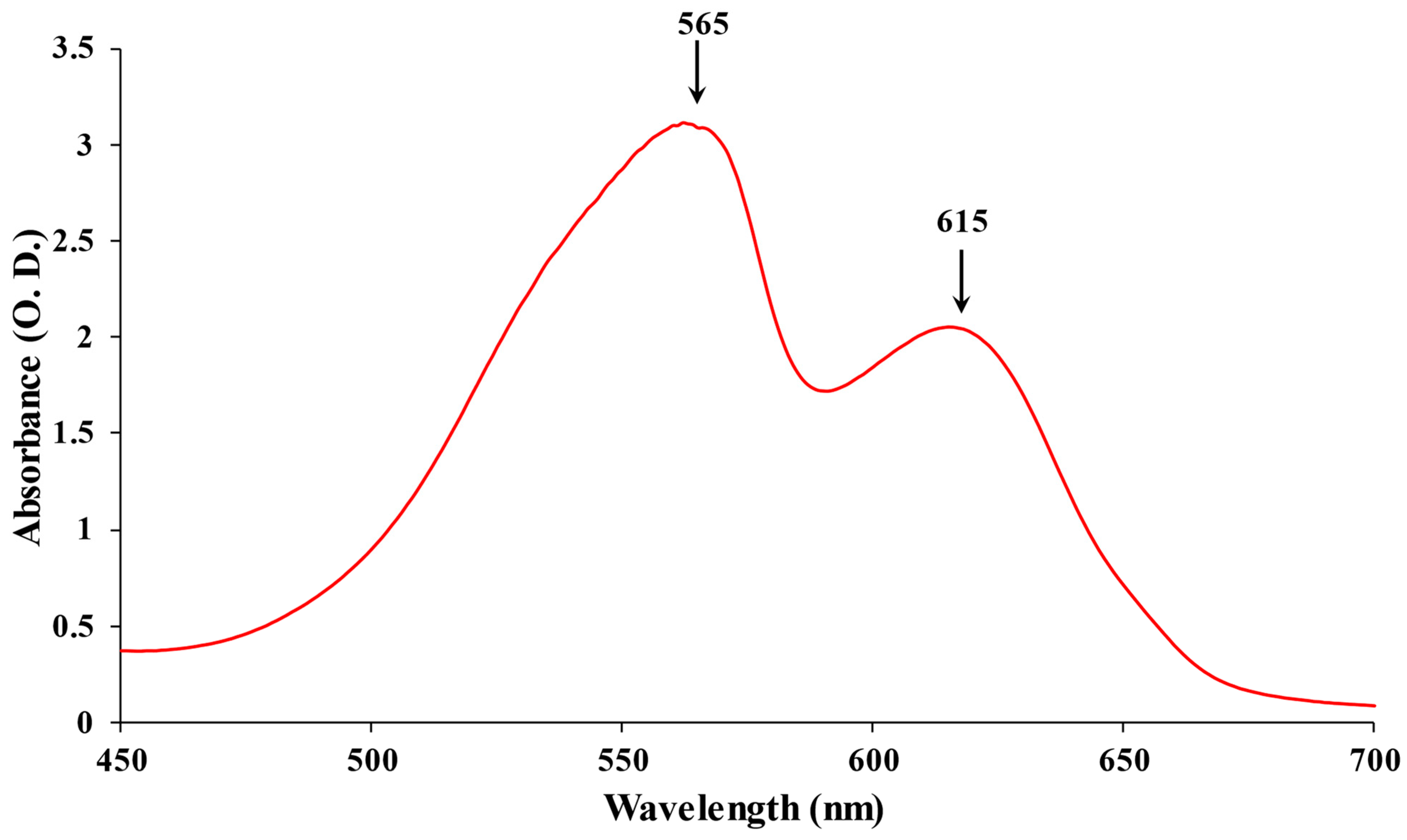
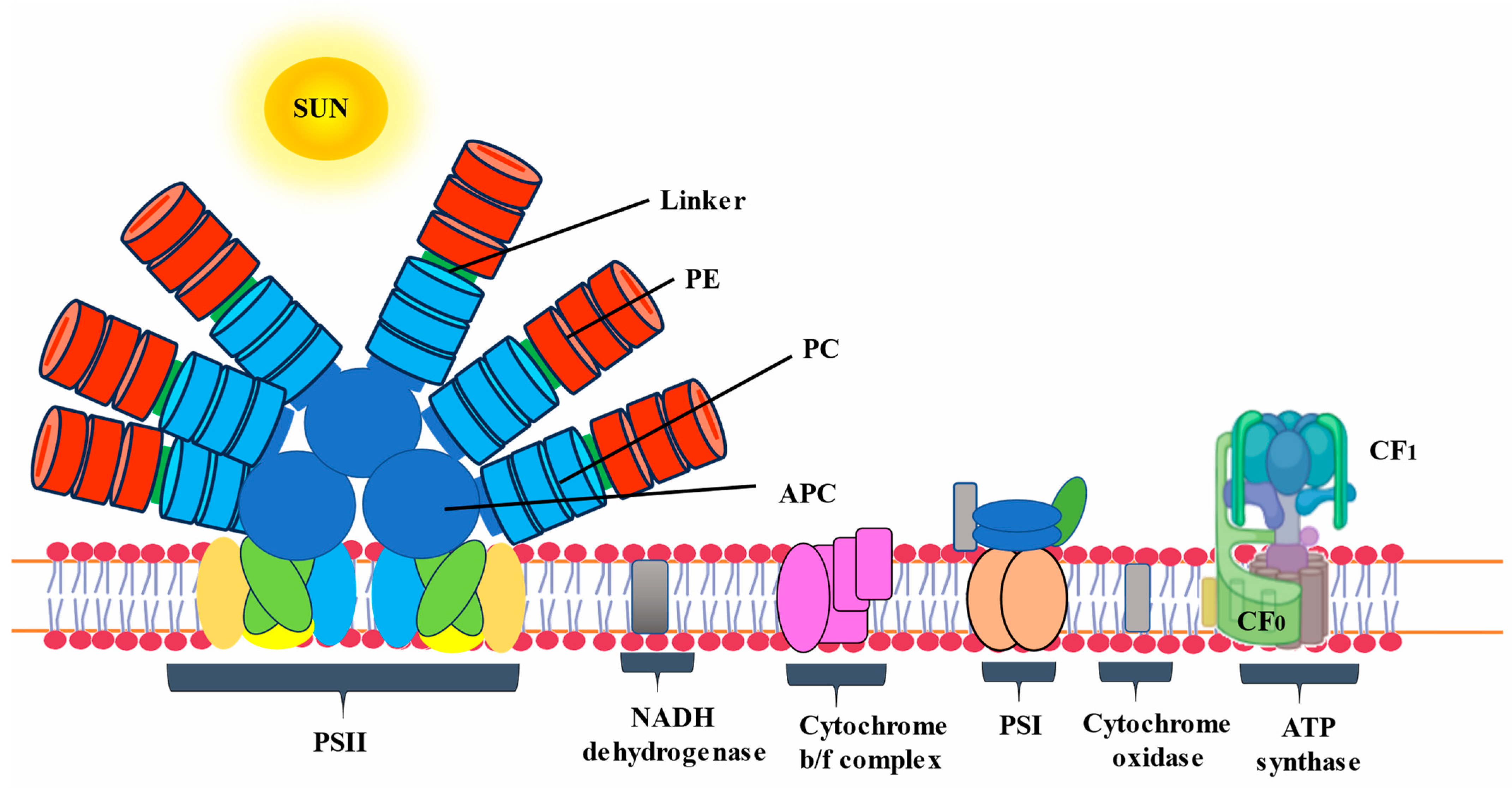
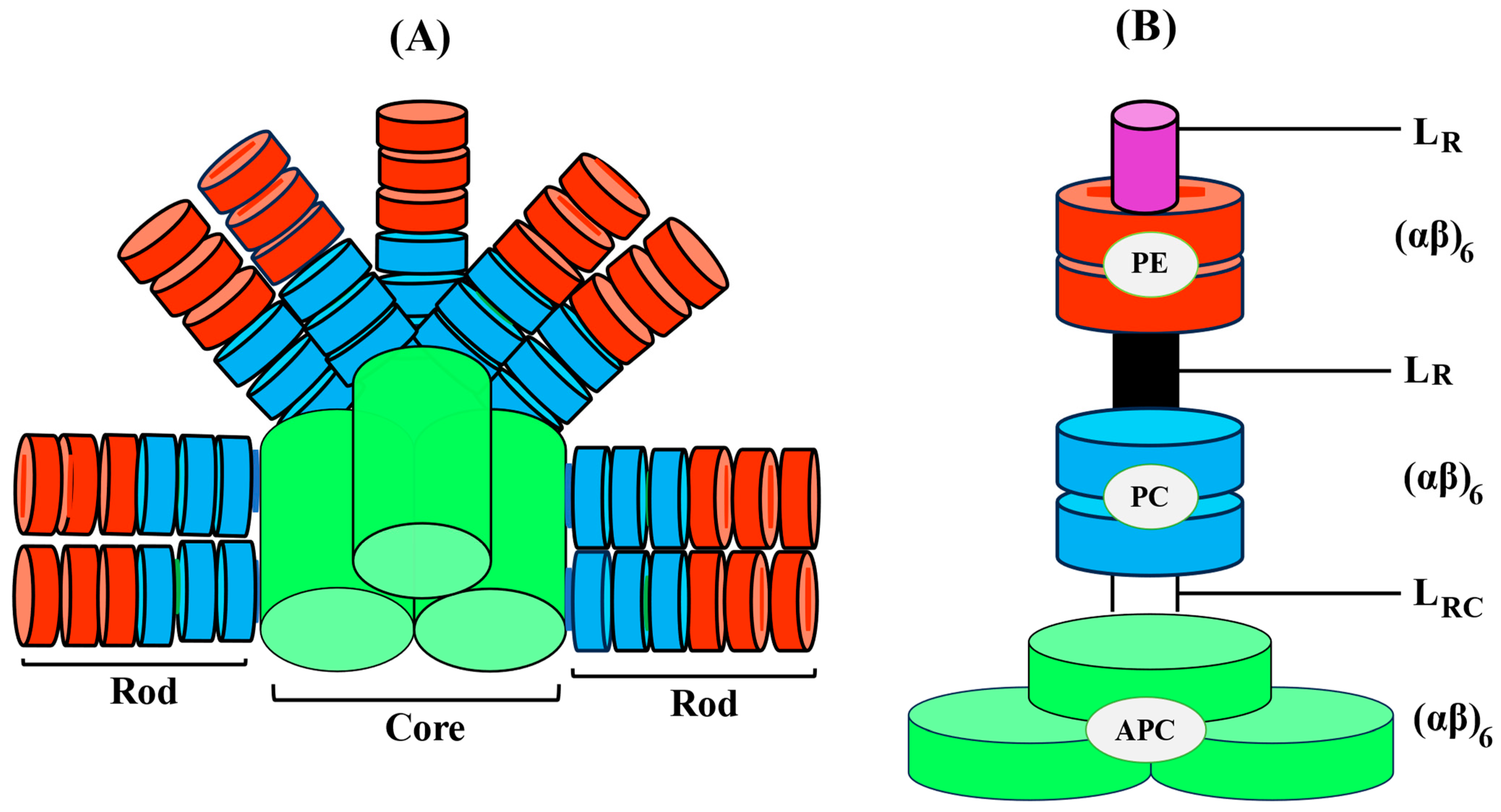
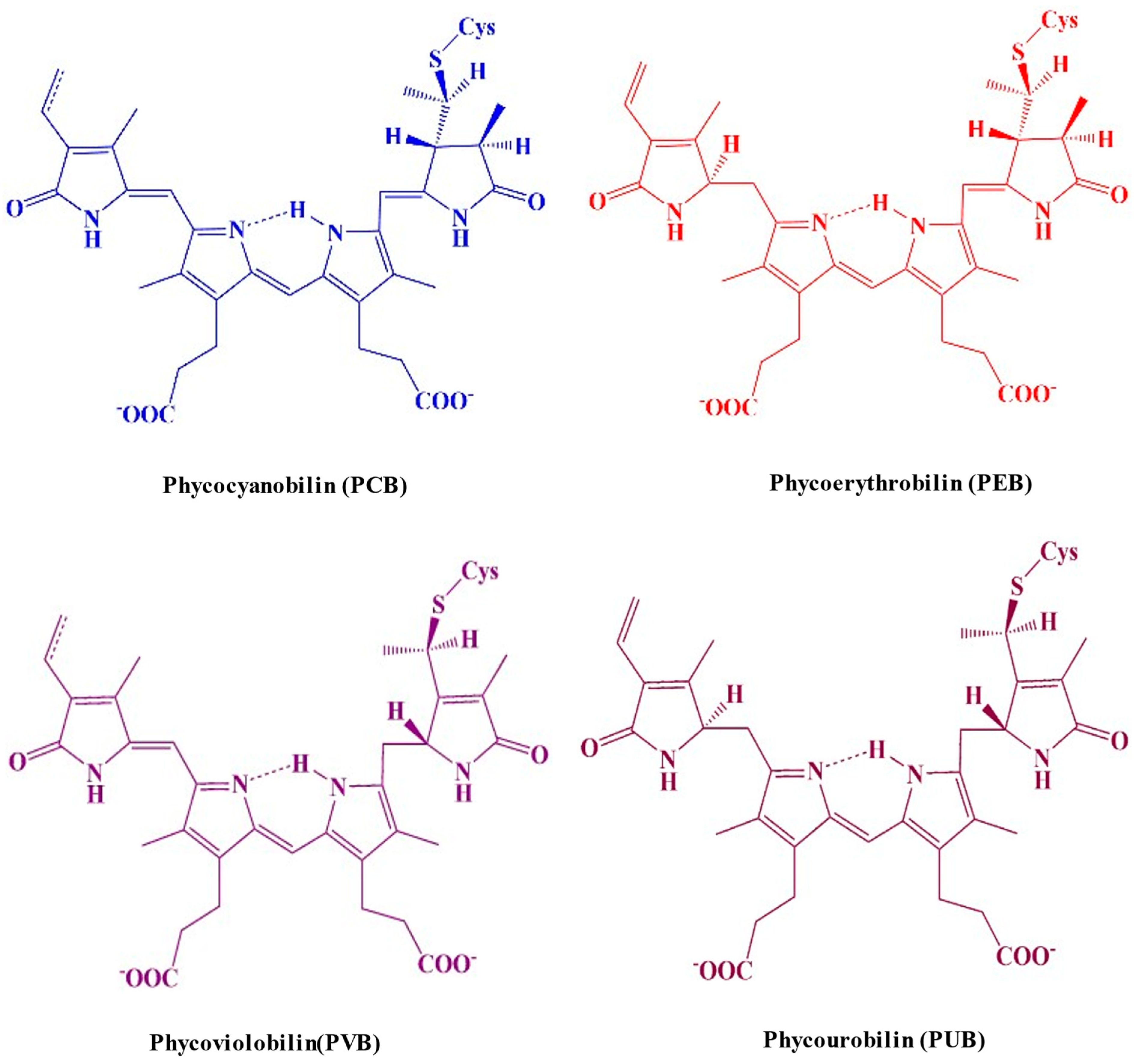
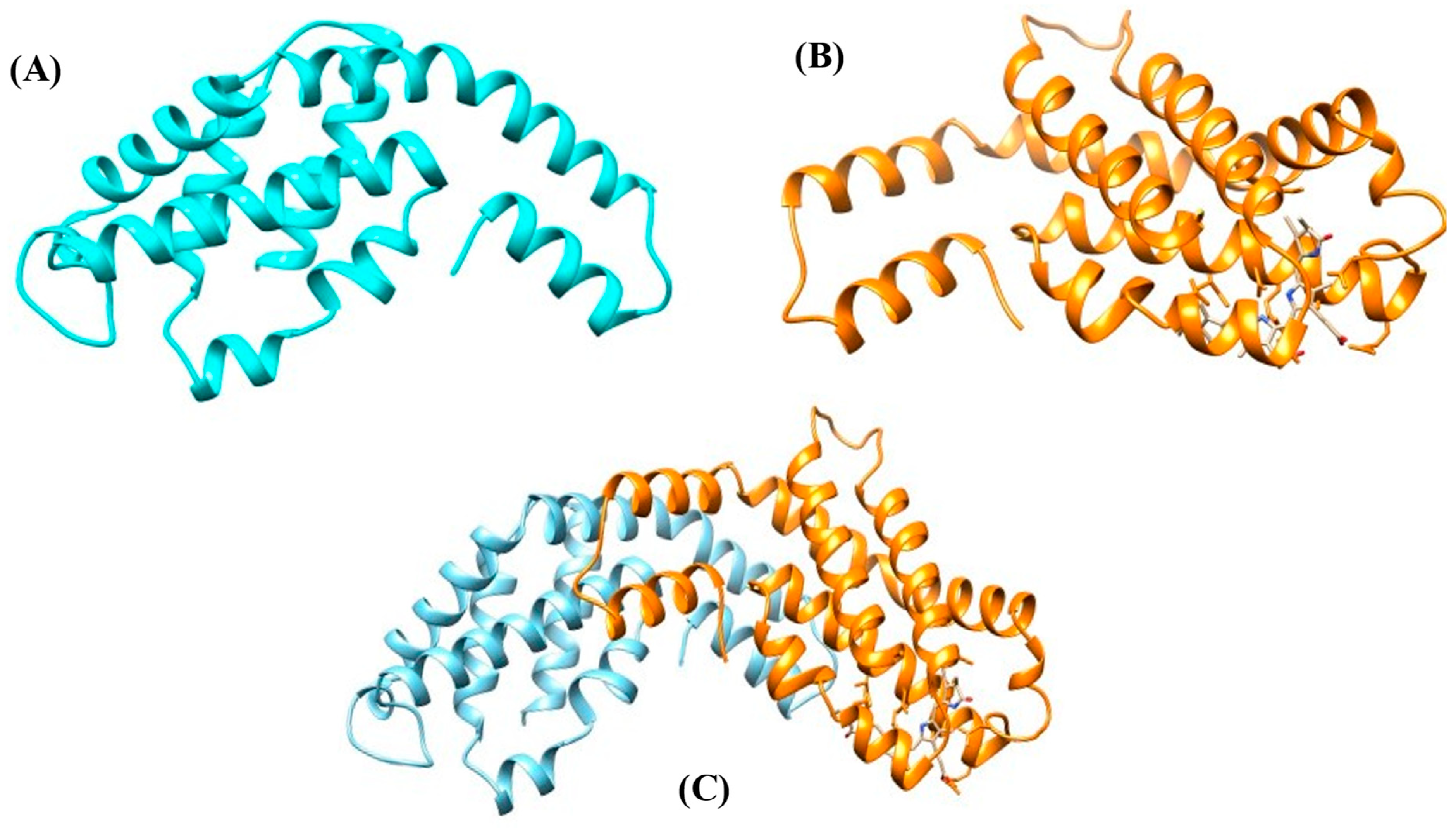
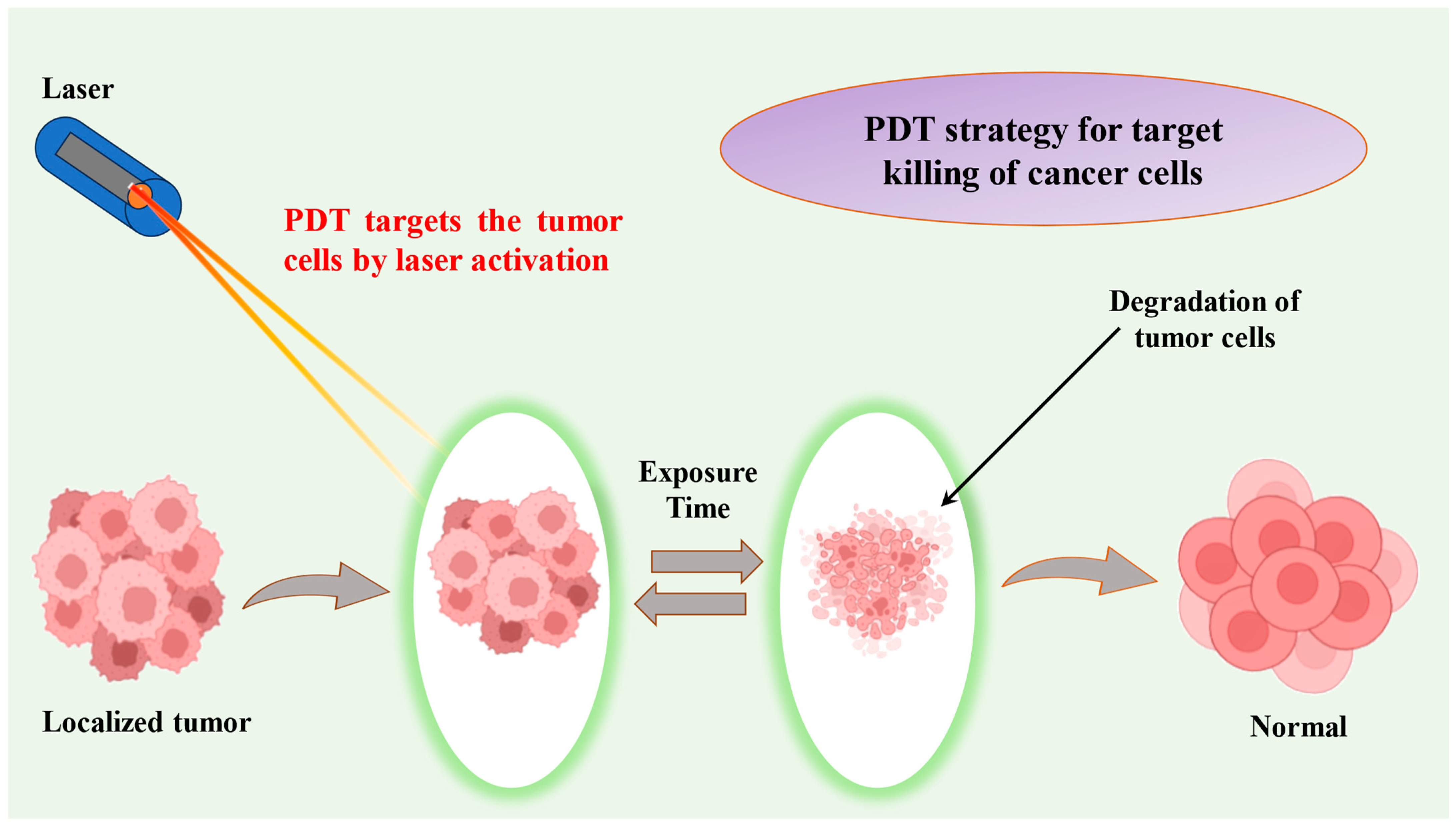
Disclaimer/Publisher’s Note: The statements, opinions and data contained in all publications are solely those of the individual author(s) and contributor(s) and not of MDPI and/or the editor(s). MDPI and/or the editor(s) disclaim responsibility for any injury to people or property resulting from any ideas, methods, instructions or products referred to in the content. |
© 2024 by the authors. Licensee MDPI, Basel, Switzerland. This article is an open access article distributed under the terms and conditions of the Creative Commons Attribution (CC BY) license (https://creativecommons.org/licenses/by/4.0/).
Share and Cite
Jha, S.; Singh, V.K.; Singh, A.P.; Gupta, A.; Rana, P.; Sinha, R.P. The Radiant World of Cyanobacterial Phycobiliproteins: Examining Their Structure, Functions, and Biomedical Potentials. Targets 2024, 2, 32-51. https://doi.org/10.3390/targets2010002
Jha S, Singh VK, Singh AP, Gupta A, Rana P, Sinha RP. The Radiant World of Cyanobacterial Phycobiliproteins: Examining Their Structure, Functions, and Biomedical Potentials. Targets. 2024; 2(1):32-51. https://doi.org/10.3390/targets2010002
Chicago/Turabian StyleJha, Sapana, Varsha K. Singh, Ashish P. Singh, Amit Gupta, Palak Rana, and Rajeshwar P. Sinha. 2024. "The Radiant World of Cyanobacterial Phycobiliproteins: Examining Their Structure, Functions, and Biomedical Potentials" Targets 2, no. 1: 32-51. https://doi.org/10.3390/targets2010002
APA StyleJha, S., Singh, V. K., Singh, A. P., Gupta, A., Rana, P., & Sinha, R. P. (2024). The Radiant World of Cyanobacterial Phycobiliproteins: Examining Their Structure, Functions, and Biomedical Potentials. Targets, 2(1), 32-51. https://doi.org/10.3390/targets2010002








